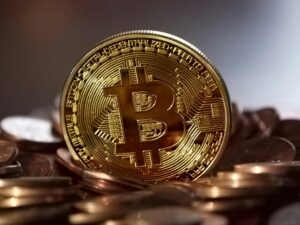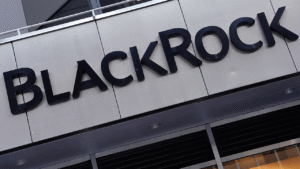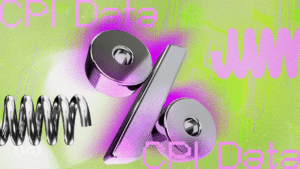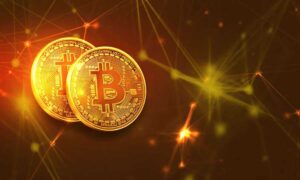Dollar in Danger? Bitcoin Gains as Fed Faces Pressure
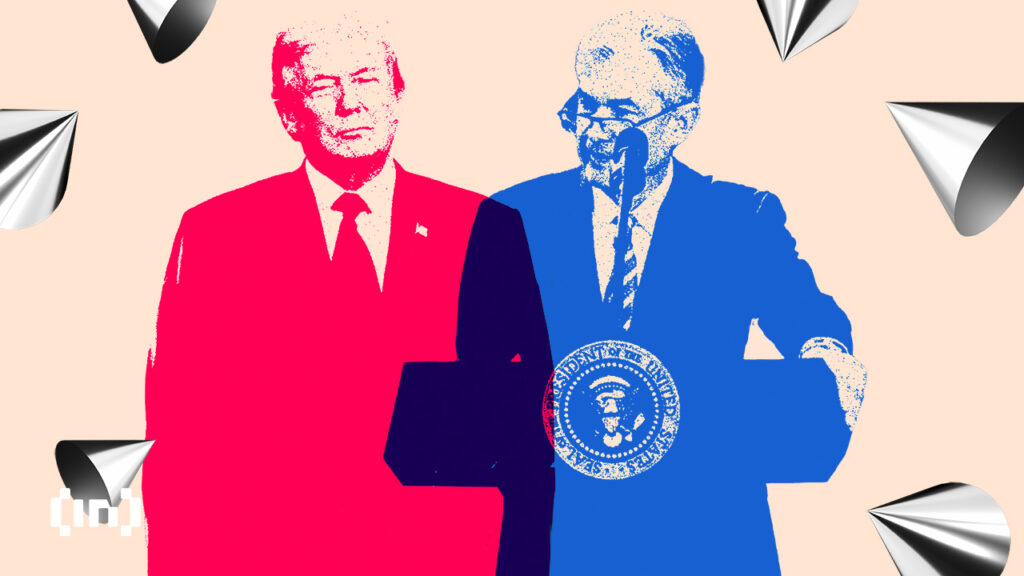
US President Donald Trump’s escalating attacks on the independence of the Federal Reserve are worrying investors. From pressuring Chair Jerome Powell to cut interest rates to firing Governor Lisa Cook, these measures have shaken investor confidence in American institutions and the US dollar.
According to Bitget, Jelly Labs, WeFi, and ZIGChain representatives, Trump’s moves represent historically uncharted territory in US monetary policy. They also believe that, while gold has always been around to soften the blow during times of uncertainty, investors may also begin to turn toward Bitcoin to safeguard their portfolios from government-controlled currencies.
Escalating Political Pressure on the Federal Reserve
Since assuming office, President Trump has carried out a series of attacks against the Federal Reserve over what he views as inadequate monetary policy.
Even before his inauguration, Trump had made a series of public comments urging Chairman Jerome Powell to lower interest rates and stimulate economic growth. In different social media posts, the President referred to Powell as “Mr. Too Late” and a “total and complete moron.”
Sponsored
Sponsored
These pressures on the central bank’s political independence have reached new heights recently. Last month, Trump announced the firing of Federal Reserve Governor Lisa Cook over mortgage fraud allegations.
Cook later filed a lawsuit against Trump, citing an illegal attempt to undermine the Fed’s independence. Two days ago, a US District Judge sided with Cook, temporarily blocking the administration from removing her. Trump has since appealed the decision.
Why This Time Is Different
History has shown that this isn’t the first time the US government has pressured the Federal Reserve over differences between the former’s political agenda and the latter’s monetary policy.
Former President Richard Nixon, for example, was determined to avoid the economic downturn in his 1972 re-election campaign that he believed cost him the 1960 election. Nixon’s conversations, later revealed in the Nixon tapes, show him urging then-Chairman Arthur Burns to lower interest rates and increase the money supply to stimulate the economy.
More famously, former President Lyndon B. Johnson physically shoved then-Chairman William McChesney Martin Jr. against a wall over the Fed’s decision to raise interest rates in the midst of the Vietnam War.
However, experts agree that the current level of intervention is unprecedented.
“In its 112-year history, no sitting US President has tried to remove a Federal Reserve Governor or the Chairman. The situation with Lisa Cook is highly polarizing as a US Judge has now blocked the President from removing the Fed Governor. The Trump administration is not known to back down from legal hurdles, and the country might not have seen the last of the Lisa Cook removal,” Bitget COO Vugar Usi Zade told BeInCrypto.
If the Trump administration wins its appeal, it would undermine the legal foundation of Fed independence, potentially causing the central bank to be perceived as a political tool.
Witnessing these developments, investors are asking a crucial question: What is the best investment strategy now?
How Is the Market Reacting to Attacks on Fed Independence?
Maksym Sakharov, CEO of WeFI, finds the recent attacks on the central bank particularly alarming because, instead of discreetly expressing dissatisfaction, the President is openly attacking the institution on social media for the world to see.
Sponsored
Sponsored
Investors have already taken note of this.
“For investors, this is a completely different ballgame because in the past, the market could largely dismiss political noise as just that— noise. But today the threats look credible, and markets are starting to price the risk of a compromised Fed,” Sakharov said.
Meanwhile, diminishing investor confidence in the US government will inevitably cause the dollar to suffer. If this contentious environment continues, the American economy will experience significant instability.
“If policymakers fail to take fiscal steps that restore confidence and instead continue policies that erode it, the consequences could be significant. We would likely see persistent inflation, rising bond yields as investors demand higher risk premiums, and growing pressure on the dollar’s status as the world’s reserve currency,” Jelly Labs Managing Director Santiago Sabater, said, adding, “This erosion of confidence will… widen wealth inequality, and deepen social and political polarization — potentially leading to periods of instability until the system resets.”
In fact, data is already showing that investors are reevaluating their trust in the US dollar.
The Global Shift Away from the US Dollar
Different market indicators have begun to show a growing trend among investors to reallocate their assets and diversify away from those tied to the United States.
Earlier this week, gold prices surged past $3,600 an ounce, setting a new record. As a traditional “safe haven” asset, this price increase demonstrates growing investor anxiety over economic and geopolitical instability.
Meanwhile, the bond market has also intensified this feeling of anxiety.
Sponsored
Sponsored
“We are already seeing a deeply inverted yield curve, which signals that the market expects economic stress ahead. If this is followed by rising long-term bond yields despite fiscal or monetary intervention, it would indicate a real loss of confidence in the Fed’s ability to control inflation,” Sabater said.
Central banks worldwide are on a significant gold-buying spree. A mid-2025 World Gold Council survey indicated that most central banks plan to increase their reserves.
In fact, for the first time since 1996, global central bank gold holdings have surpassed their US Treasury holdings. A key factor driving this trend is a strategic effort to reduce their dependence on the US dollar as the world’s primary reserve currency.
On a more personal level, investors have also begun to diversify their portfolios.
A New Monetary Era?
According to Sakharov, these recent developments could finally end the world’s “addiction” to the US dollar.
“For decades, the world has relied on the dollar as the global reserve currency. However, events of the past few years have shown this model lacks sustainability. The US has abused its position by printing trillions of dollars and using the dollar as a political weapon,” he said, adding, “I believe we might be on the cusp of a new monetary era— where the world is no longer reliant on a single currency, but on a basket of currencies and assets.”
Gold’s 5,000-year history as a vital hedge against risk is unparalleled. But now, a new and powerful alternative has emerged: Bitcoin.
Bitcoin and Gold: A Modern-Day Portfolio Diversifier
Sponsored
Sponsored
Experts are divided on whether Bitcoin will eventually replace or coexist with gold. However, they generally agree that Bitcoin possesses unique and valuable characteristics that no other asset can fully replicate.
“Gold is rising at the moment, underlining its role as a trusted hedge in uncertain times. Bitcoin adds a digital layer: it is decentralized, portable, and increasingly treated as ‘digital gold.’ Together, they represent a dual hedge– gold with centuries of credibility, and Bitcoin with the technology and infrastructure that align with how global finance is evolving,” ZIGChain Co-Founder Abdul Rafay Gadit told BeInCrypto.
He believes investors will undoubtedly consider these inherent benefits over the long term.
“Structural diversification is likely– less reliance on the dollar and greater adoption of tokenized, transparentfinancial infrastructure. Catalyst events and policy shifts will keep swinging sentiment between ‘pro-crypto’ optimism and caution, with the strongest flows concentrating in assets seen as safe havens, like Bitcoin and gold, rather than more speculative tokens,” Rafay Gadit added.
According to Sakharov, stablecoins will be the crucial link between traditional finance and digital assets.
“On the crypto side, track stablecoin inflows— price-pegged digital tokens that serve as a cash bridge into crypto. A sharp rise suggests money seeking shelter outside the banking system; from there, reallocating into Bitcoin is a short step,” he said.
These parallel trends suggest the rise of a new investor mindset.
Will the World Move Beyond the Dollar?
While economic crises and market instability are nothing new, the unprecedented speed of technological advancement is. These changes inevitably offer new ways to reimagine long-standing monetary systems.
Slowly but surely, Bitcoin’s properties have risen to the occasion, providing people an alternative way to manage their money—especially in contexts where instability reigns.
“It’s the only asset that is completely decentralized, global, and neutral. It’s the money of the people, for the people. When you can’t trust the people in charge, that becomes a very powerful thing,” Sakharov concluded.
The growing political and economic uncertainty in the United States could encourage a new approach to global finance that doesn’t depend on a single reserve currency. Although it’s still early, things seem to be moving in that direction.





